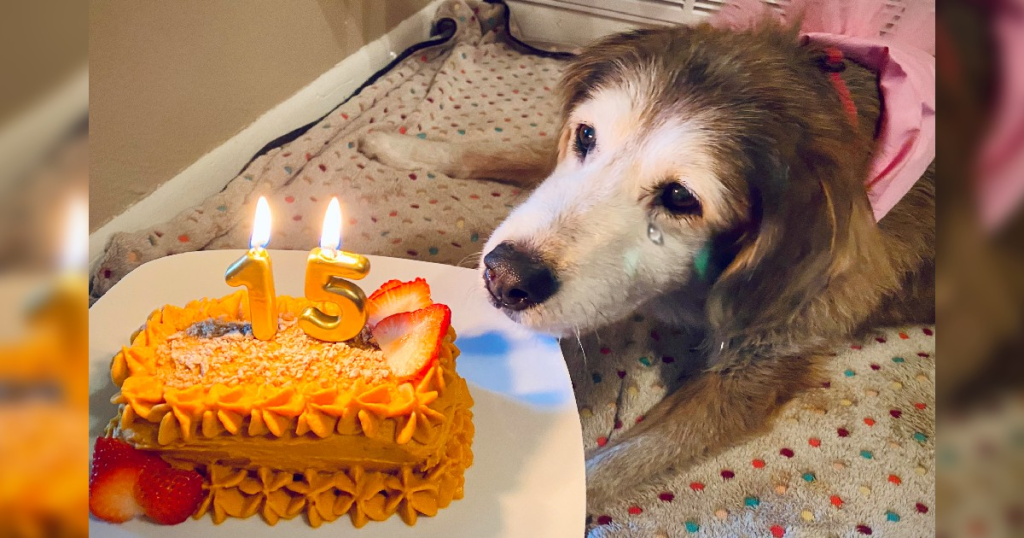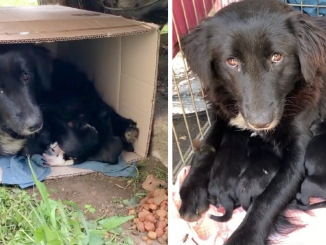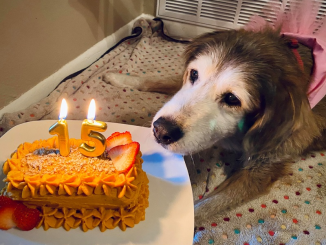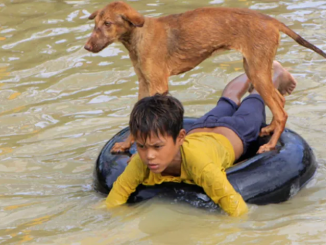In the middle of a military base outside Mexico City, an army colonel runs what he calls a kindergarten for dogs.

In the middle of a military base outside Mexico City, an army colonel runs what he calls a kindergarten for dogs.
Puppies that one day will become rescue dogs, or sniffer dogs for drugs or explosives, get their basic training here, at Mexico’s Army and Air Force Canine Production Center. The puppies are born and spend their first four months at the facility, before being sent to military units around the country for more specialized training.
Founded in 1998, the center has in the past produced breeds such as German Shepherds and Rottweilers.
Now, it exclusively breeds Belgian Malinois — about 300 of them a year.
“It’s a very intelligent dog, it’s a dog with a lot of hardiness, very resistant to diseases,” said Col. Alejandro Camacho Ibarra, a veterinarian and the center’s director. It is the Mexican military’s only such production facility, and Camacho said it may be the largest in Latin America.
The mainly green-and-white, one-story buildings look like any others at the military camp in the State of Mexico, near Mexico City. But the difference here is in the sounds that fill the air: high-pitch barking from dozens of puppies scattered through its maternities and training camps.
Precautions here are strict because of a recent canine parvovirus outbreak that sickened some of the puppies. Visitors are disinfected with a spray, and must step into a watery solution to clean shoe soles. Only military personnel can touch the puppies. If you want to get close, you need to wear scrubs, shoe protectors and a mask, but you still cannot hold or pet the animals.
The training starts early in life, about a month after birth once the weaning process finishes. And everything is taught as a game.
“We start playing with the dog,” Camacho said. The idea is to draw them to items that trainers call “attractors” — like a ball or a rag — and puppies are challenged to catch them. “Every time it holds his prey, it’s rewarded, congratulated, and it learns to go after that prey, after that attractor,” Camacho added.
Unlike in civilian life, where puppies often get food treats, in the military the only prize for a job well done is a caress and some praise.
In one section of the camp, there’s a trail with obstacles including rocks, a tunnel, a section of empty plastic bottles to clamber over, a ladder and tires.
A soldier beckons the little dogs with a rag they must capture. The brown puppies with black snouts begin running through the trail, jumping over the rocks and crossing the obstacles. One takes the lead and the second struggles to cross over the plastic bottles, but also finishes. Both go to bite the rag the soldier holds.
“Very, very good, sons! Very good, boys,” he repeats while dragging the puppies as they maintain their grasp on the rag for several moments.
Camacho explains that the puppies are known by a number until they are three months old, when they are given a proper name. Each year, the center gives names according to a single letter of the alphabet. In 2023, that letter is “F.”
Febo, Frodo, Fósil, Forraje and Fido are some of this year’s names.
The basic training ends when the puppies are 4 months old. Then, they move to other military units to become specialists in detection of drugs or explosive, in search and rescue or in protection and security.
The current government of Mexico’s President Andrés Manuel López Obrador has relied heavily on the armed forces for various initiatives, from public safety to the building of airports and a tourist train line. And K-9 units have been a key element of some of the military’s activities, like the detection of drugs.
Col. Camacho said that some dogs born at the center have been trained to detect fentanyl, a synthetic opioid trafficked by Mexican cartels that has been blamed for about 70,000 overdose deaths per year in the United States.
That kind of specialized training happens elsewhere, but the colonel says it builds on his center’s basic training by using “attractor” objects but having them impregnated with the scent of what the dogs need to track, such as a drug.
Dogs retire from their military service after eight years, Camacho says.

Many of the dogs have become unsung heroes of missions in Mexico and abroad. Occasionally they become publicly known, like a German Shepherd named Proteo who was part of a rescue team sent in February to Turkey after a 7.8-magnitude earthquake that killed more than 40,000 people.
Proteo died during the search for survivors of the quake. A statue of him now stands at the center.
Another dog that made headlines in Mexico and abroad was a yellow Labrador retriever rescue dog named Frida. The Navy dog gained fame in the days following Mexico’s Sept. 19, 2017, earthquake that left more than 300 dead in the capital. She retired in 2019 and died in 2022.
Col. Camacho said that the dogs have a symbiotic relationship with their handlers during their working life in the military.

“The dog uses us to survive, but we also use the dog to do a job,” he said. “So it’s a coordinated work where we both get a benefit.”
“15 Years Later: A Heartwarming Moment as a Dog Celebrates its First Birthday with a Cake and a Tear of Joy”

The aging dog had been a loyal companion to its owner for 15 years and a significant part of their life. The owner wanted to show gratitude for the dog’s unwavering companionship and decided to throw it a memorable birthday party. The party preparations were filled with anticipation and thrill, as the owner carefully selected decorations such as colorful balloons and streamers to create a joyful ambiance. A large banner flaunted on the wall, proudly announcing “Happy Birthday to our beloved companion!”

With a wildly wagging tail, the dog watched in pure joy and excitement as the celebration in honor of its existence unfolded. It was beyond thrilled that its owner had invited close friends and relatives who had witnessed its unwavering loyalty and attachment to its human over the years.

The scent of delicious snacks wafted through the air, tempting both the guests and the furry friend in attendance. The host had gone above and beyond to offer an array of tasty treats that catered to both human and canine taste buds. Plates were piled high with mouth-watering food, and a one-of-a-kind dog cake stole the show, complete with crunchy biscuits and a single candle.
As the time came to cut the cake, cheers and well-wishes filled the room. Surrounded by loved ones, the dog soaked up the warmth of the attention showered upon it. With a gentle paw, the pup even helped guide the knife, playing an active role in this special moment. The cake was divided and enjoyed, a thoughtful gesture symbolizing the bond between the dog and its human companions.

Throughout the day, the pooch relished the love and affection lavished upon it. It was treated to affectionate cuddles, indulgent tummy rubs, and heartfelt expressions of gratitude. The dog was filled with a deep sense of satisfaction, aware that its mere presence had made a difference in the lives of those around it, just as they had left an indelible mark on its own being.

The festivities carried on throughout the night, with fun and entertaining activities that brought smiles and happiness to all those in attendance. Despite being older and moving at a slower pace, the dog fully immersed itself in the festivities, cherishing every moment with pure joy. It seemed as though all of its troubles and worries had vanished, replaced with an overwhelming feeling of contentment and belonging.
As the party drew to a close, the dog cozied up next to its owner’s feet, overwhelmed with a profound sense of pleasure and adoration. Tears of happiness sparkled in its eyes, a testament to the depth of its emotions. This was a moment 15 years in the making, a celebration of its very existence, and one that would forever be etched in its memory.

In the end, it turned out to be more than just a regular birthday celebration. It was an occasion to commemorate the unwavering love that a dog has for its owner. It was a tribute to the enduring affection, loyalty, and happiness that a beloved pet brings into our lives. Moreover, it served as a gentle reminder to the elderly dog that it was still valued and that its journey had been exceptional.
As the night drew in, the dog drifted off to sleep, wrapped in a cocoon of love and gratitude. In its slumber, it relived the day’s events, the laughter, and the shared moments of joy. A smile crept onto its snout as it realized that it had borne witness to a remarkable milestone: a birthday bash that celebrated a lifetime of cherished memories.
Don’t forget to SHARE this heartwarming tale with those you hold dear.



Leave a Reply